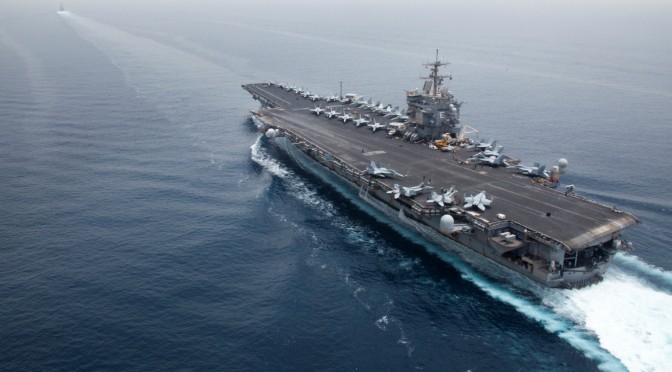By Noel Williams
This article originally featured on War on the Rocks. You can read it in its original form here.
The U.S. Navy is confined to a narrow intellectual roadstead, effectively corralled in its thinking and investment decisions by the three horsemen of budget constraints, bureaucratic sclerosis, and constricting congressional mandates. The current received wisdom of the institution judges that inadequate resources for shipbuilding, coupled with a ponderous acquisition process and regulatory constraints, such as the requirement to maintain 11 aircraft carriers, means it is not possible to build a new ship or redesign our fleet architecture — or even think about doing so. The “smart” thinking is that the only way forward is to simply repeat improved versions of existing platforms — destroyers, littoral combat ships, aircraft carriers — and perhaps even rename and re-categorize a few. Regrettably, our adversaries are not similarly encumbered in their thinking, and this simple systemic asymmetry between our calcified bureaucracy and their capacity for innovation means we are effectively ceding the field, or ocean, to future adversaries. It is “baked in” that we will lose the next big naval contest if we maintain our current heading.
Given the seriousness of the circumstances, we should be working overtime to change this disastrous course and start thinking again about fleet and ship design, even if today’s resources don’t allow full implementation of the new fleet architecture and the ships we may envision. There is a benefit to having a plan, even if current circumstances militate against its full implementation.

